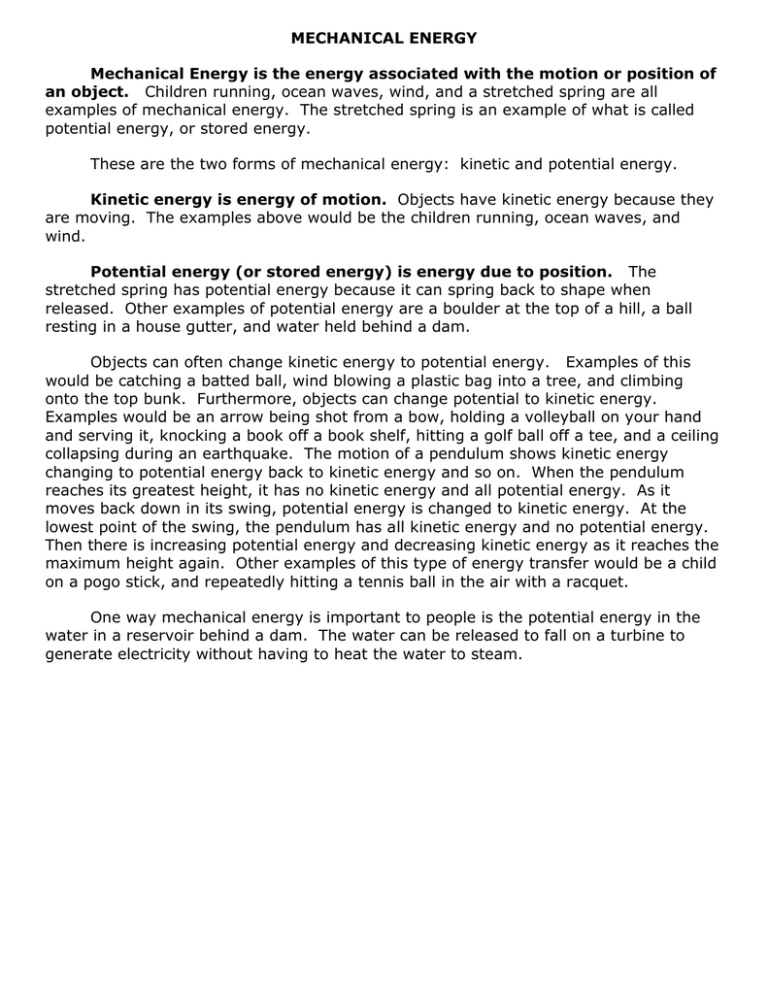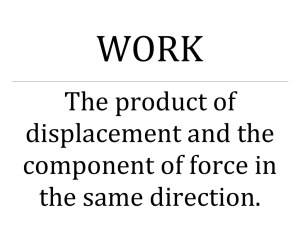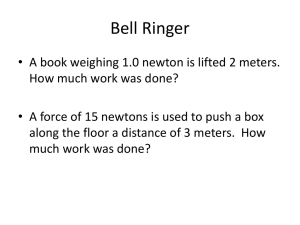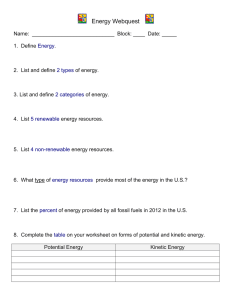MECHANICAL ENERGY Mechanical Energy is the energy
advertisement

MECHANICAL ENERGY Mechanical Energy is the energy associated with the motion or position of an object. Children running, ocean waves, wind, and a stretched spring are all examples of mechanical energy. The stretched spring is an example of what is called potential energy, or stored energy. These are the two forms of mechanical energy: kinetic and potential energy. Kinetic energy is energy of motion. Objects have kinetic energy because they are moving. The examples above would be the children running, ocean waves, and wind. Potential energy (or stored energy) is energy due to position. The stretched spring has potential energy because it can spring back to shape when released. Other examples of potential energy are a boulder at the top of a hill, a ball resting in a house gutter, and water held behind a dam. Objects can often change kinetic energy to potential energy. Examples of this would be catching a batted ball, wind blowing a plastic bag into a tree, and climbing onto the top bunk. Furthermore, objects can change potential to kinetic energy. Examples would be an arrow being shot from a bow, holding a volleyball on your hand and serving it, knocking a book off a book shelf, hitting a golf ball off a tee, and a ceiling collapsing during an earthquake. The motion of a pendulum shows kinetic energy changing to potential energy back to kinetic energy and so on. When the pendulum reaches its greatest height, it has no kinetic energy and all potential energy. As it moves back down in its swing, potential energy is changed to kinetic energy. At the lowest point of the swing, the pendulum has all kinetic energy and no potential energy. Then there is increasing potential energy and decreasing kinetic energy as it reaches the maximum height again. Other examples of this type of energy transfer would be a child on a pogo stick, and repeatedly hitting a tennis ball in the air with a racquet. One way mechanical energy is important to people is the potential energy in the water in a reservoir behind a dam. The water can be released to fall on a turbine to generate electricity without having to heat the water to steam.


